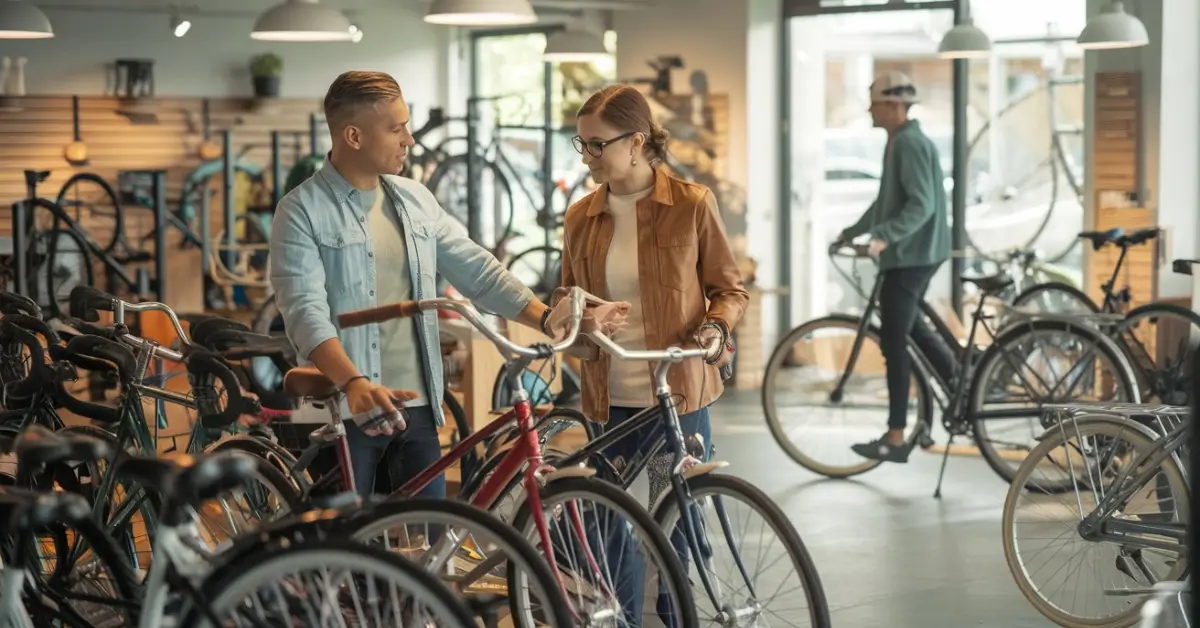Have you ever walked into a bike shop or scrolled through online listings, only to feel completely lost in the sea of options? What sort of bicycle should I buy?—it’s a question many first-time riders and even seasoned cyclists struggle with. I’ve been there, torn between a sleek road bike, a rugged mountain bike, and a practical commuter. The good news? Finding the right bike doesn’t have to be overwhelming. In this guide, I’ll break it down in simple terms, sharing insights from years of experience to help you pick the perfect ride. Stick around, and let’s get you rolling with confidence! 🚴♂️
Understanding Your Cycling Needs

Buying a bike isn’t just about picking the flashiest one at the store. It’s like choosing the right pair of shoes—it needs to fit your lifestyle, your terrain, and your comfort level. Before you swipe your card, take a step back and ask yourself: How, where, and why will I be riding? The answers will make all the difference.
How Often Will You Ride?
Think about this: Are you commuting daily, riding on weekends, or just testing the waters? Your riding frequency determines how much durability and comfort you need.
- Daily riders need something sturdy and low-maintenance, like a hybrid or commuter bike that won’t leave them stranded with a flat tire every other week.
- Casual weekend riders might prefer a lightweight road bike or a cruiser, built for leisurely rides.
- Once-in-a-while riders should stick with something simple and budget-friendly—no need for expensive components if it’s just an occasional spin around the park.
Quick takeaway: If you ride daily, get a durable commuter bike. If it’s just for fun, go for comfort over performance.
What Type of Terrain Will You Be Riding On?
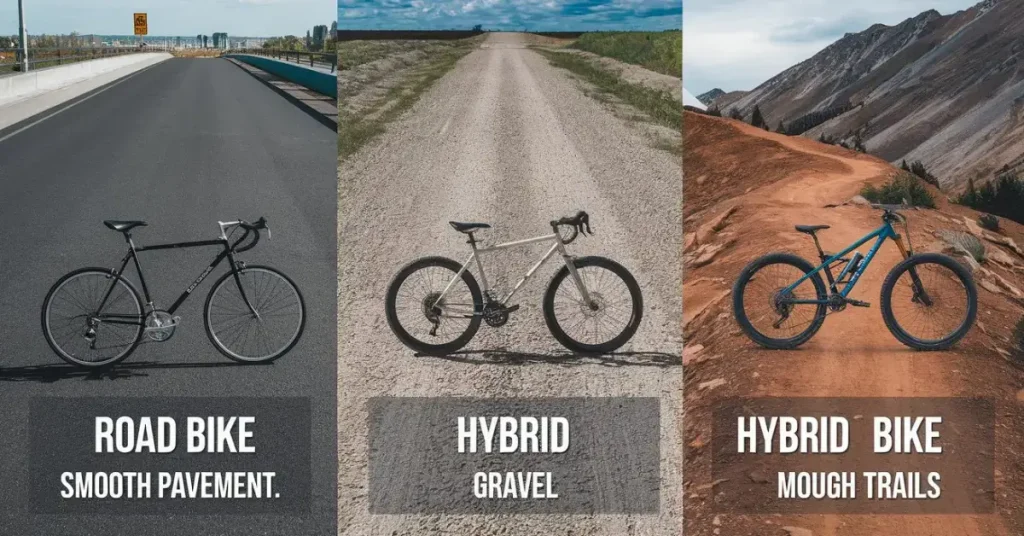
Not all roads (or trails) are created equal. The surface you ride on can make or break your experience.
- City streets? A road bike, commuter bike, or e-bike will handle smooth pavement like a dream.
- Gravel paths & mixed terrain? A gravel or hybrid bike gives you the best of both worlds.
- Off-road trails? You’ll need the rugged suspension and traction of a mountain bike to take on rocks, roots, and mud.
When I first started cycling, I thought my sturdy mountain bike would be fine for everything—including commuting. Big mistake. After a week of pedaling that tank through city streets, I switched to a hybrid. Suddenly, my rides were smoother, faster, and way more enjoyable.
Quick takeaway: Match your bike to your terrain. Road bikes for smooth streets, hybrids for mixed use, and mountain bikes for rough trails.
Do You Need a Bike for Commuting, Fitness, or Casual Riding?
Your why matters as much as your where. Here’s how to narrow it down:
Commuting? Get a hybrid, folding bike, or e-bike—something reliable with built-in comfort. Bonus points if it has a rack for your bag!
Fitness? A road bike or gravel bike will help you rack up miles and improve endurance.
Casual cruising? Go for a cruiser or a hybrid—upright position, relaxed ride, and all the comfort you need.
When my friend Sarah started biking to work, she picked up a budget mountain bike thinking it was a solid choice. After a month of sweaty, inefficient rides, she traded it for a lightweight commuter bike. Not only did she get to work faster, but she also wasn’t exhausted before the day even started. Lesson learned: choose a bike designed for your actual needs, not just what looks cool.
Quick takeaway: Commuters need reliability, fitness riders need speed, and casual riders need comfort.
Final Thoughts
There’s no one-size-fits-all bike, just like there’s no perfect one-size-fits-all pair of shoes. The key is knowing how you’ll use it. Whether it’s a road bike for speed, a hybrid for flexibility, or a mountain bike for adventure, the right choice depends on your lifestyle.
Now that you’ve got a better idea of what you need, let’s take a closer look at the different types of bikes and which one is the perfect fit for you! 🚴♀️
Types of Bicycles & Their Uses
So, you’re ready to pick a bike—but where do you even start? Walking into a bike shop can feel like stepping into a candy store. Road bikes, hybrids, gravel bikes… the choices are endless!
I’ve been there—staring at rows of sleek frames and fancy gear, wondering which one will actually make my rides better. But don’t worry. I’ll break it down like I’m helping a friend pick the perfect bike, with some personal insights and pro tips along the way.
Commuter Bikes: The Everyday Hero
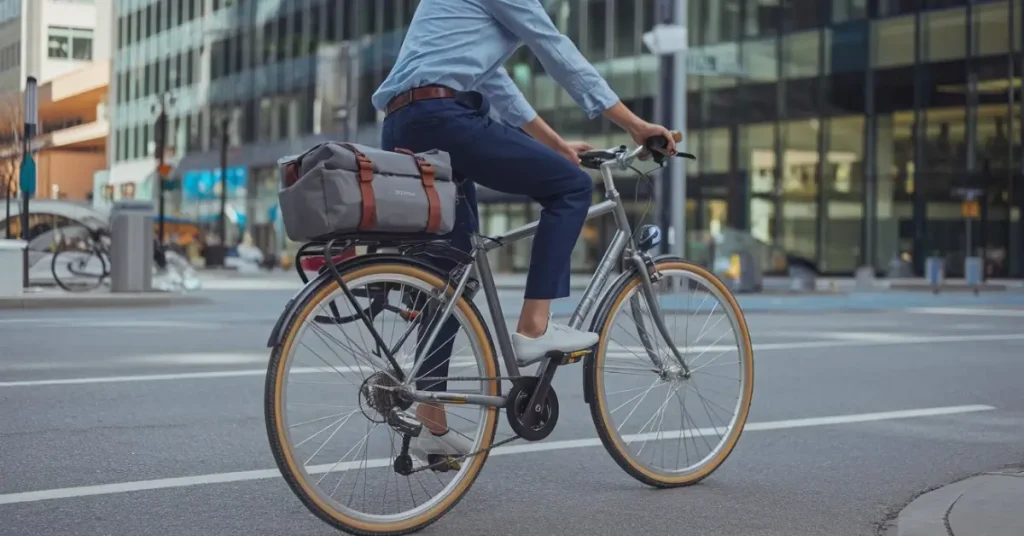
If your bike is going to be your daily ride—to work, school, or the grocery store—you need something comfortable, reliable, and low-maintenance.
I learned this the hard way when I used a road bike for commuting. Sure, it was fast, but the aggressive posture and thin tires weren’t exactly ideal for stop-and-go city riding. Enter: the commuter bike.
Features That Make a Difference
- Upright seating—way easier on your back and better for navigating traffic.
- Mounts for racks and fenders—because carrying groceries in a backpack is not the move.
- Durable tires—less chance of getting a flat on rough city streets.
✅ Best for: Daily commutes, urban areas, and casual city rides.
💡 Example bikes: Hybrid bikes, city bikes, folding bikes.
🚀 Quick takeaway: If you want a stress-free city ride (and don’t want to show up to work drenched in sweat), go for a commuter bike.
Road Bikes: Speed & Endurance on Pavement
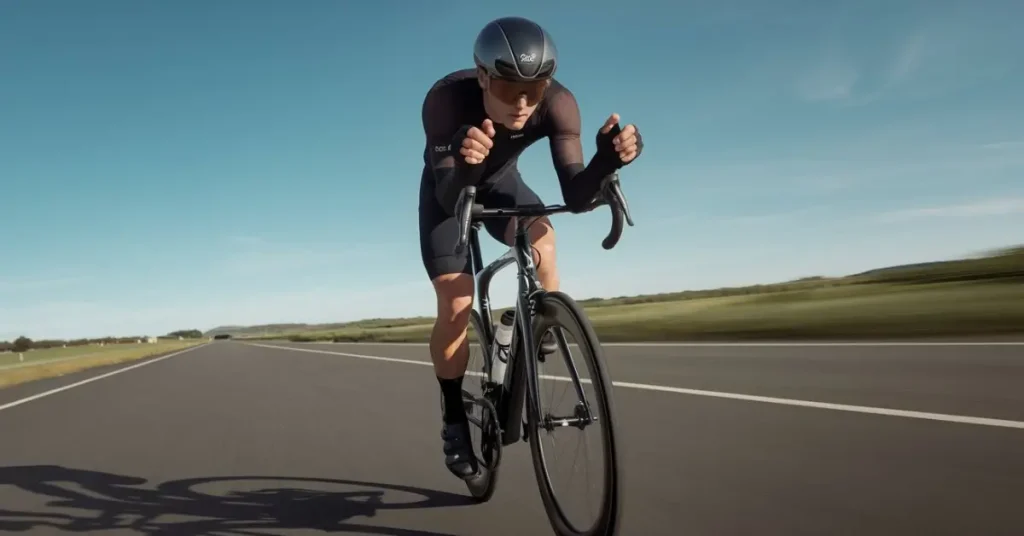
Ever dreamt of gliding down an open road, wind in your face, feeling like a Tour de France pro? That’s exactly what a road bike delivers.
I got my first road bike when I wanted to ride longer distances. I won’t lie—the first few rides were brutal. The drop handlebars took some getting used to, and my legs were on fire. But once I got the hang of it? Game-changer.
What Sets It Apart
- Feather-light frame—every pedal stroke feels effortless.
- Drop handlebars—cuts through the wind, making you more aerodynamic.
- Multiple gears—so hills won’t feel like Everest.
✅ Best for: Fitness rides, long-distance cycling, road racing.
💡 Example bikes: Endurance road bikes, aero road bikes, performance road bikes.
🚀 Quick takeaway: If you love speed, distance, and efficiency, a road bike is the way to go. Just be prepared for a learning curve!
Mountain Bikes: Built for the Wild
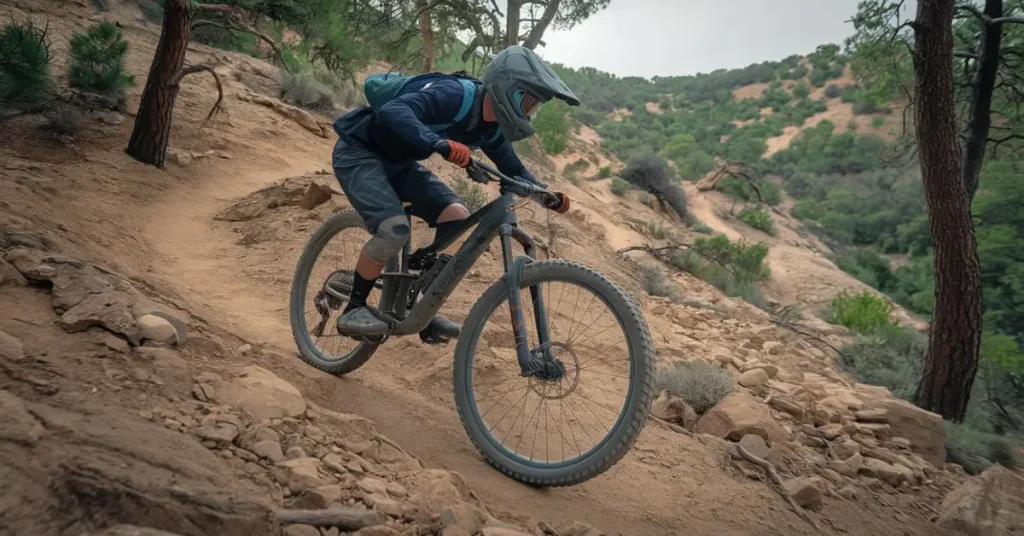
I’ll never forget my first real mountain bike ride. One minute, I was confidently rolling over some dirt. The next? I was on the ground, covered in dust, wondering what just happened.
Mountain biking is thrilling, unpredictable, and ridiculously fun—but only if you have the right bike.
Key Features for Adventure
- Suspension for shock absorption—because trails aren’t as forgiving as pavement.
- Knobby tires for grip—keeps you stable on rocks, roots, and mud.
- Low gears for steep climbs—so you don’t end up walking your bike uphill.
✅ Best for: Off-road trails, mountain paths, and rugged terrain.
💡 Example bikes: Hardtail mountain bikes, full-suspension mountain bikes, downhill bikes.
🚀 Quick takeaway: If your idea of fun includes dirt, adrenaline, and epic views, grab a mountain bike and hit the trails!
Hybrid Bikes: The Jack-of-All-Trades
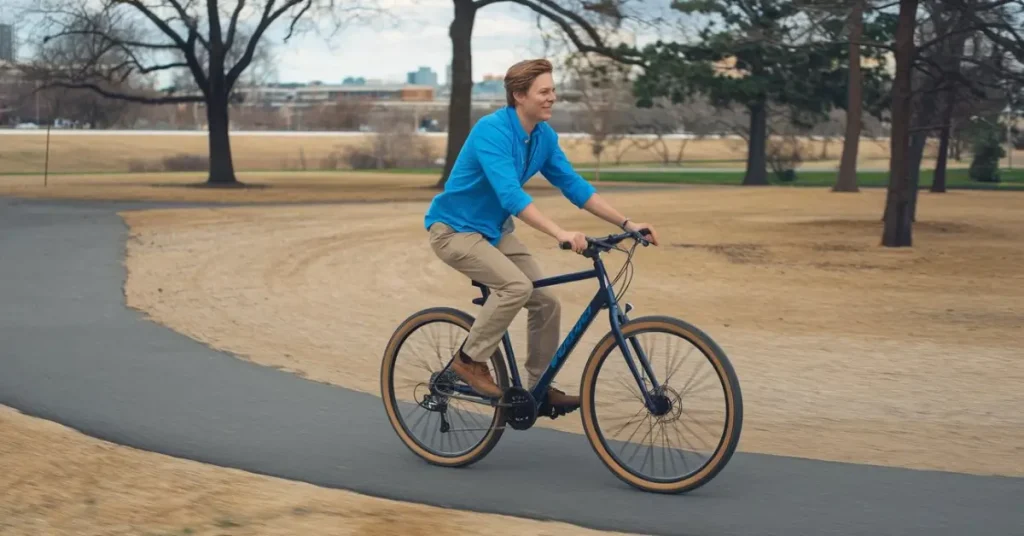
Think of a hybrid bike as the Swiss Army knife of bicycles. It blends the best of road and mountain bikes, making it a solid choice if you’re not sure what you want.
I got a hybrid when I needed a bike for weekend rides and occasional commutes. It wasn’t the fastest or the toughest, but it did a bit of everything—comfortably.
Why It’s a Versatile Choice
- Medium-width tires—smooth enough for roads, grippy enough for light trails.
- Upright riding position—no back or neck strain.
- Lightweight but sturdy frame—handles both city streets and gravel paths.
✅ Best for: Beginners, casual riders, mixed-terrain commuting.
💡 Example bikes: Trek FX series, Giant Escape, Specialized Sirrus.
🚀 Quick takeaway: If you want a bike that does a little of everything, a hybrid is a smart pick.
Gravel & Touring Bikes: Adventure Ready
Gravel and touring bikes are for people who love exploring the unknown—long dirt roads, multi-day trips, and carrying everything they need on two wheels.
I met a guy once who biked across the country on a touring bike. He swore by it—comfortable, reliable, and built for the long haul.
Why They’re Perfect for the Long Haul
- Sturdy frame with mounts for gear—carry all your essentials.
- Wider tires—more grip on gravel and dirt roads.
- Comfortable geometry—because all-day rides shouldn’t feel like torture.
✅ Best for: Adventure rides, bikepacking, long-distance touring.
💡 Example bikes: Salsa Journeyman, Trek Checkpoint, Surly Long Haul Trucker.
🚀 Quick takeaway: If you crave long rides, remote trails, and self-sufficiency, these bikes are calling your name.
Electric Bikes (E-Bikes): Ride Farther with Less Effort
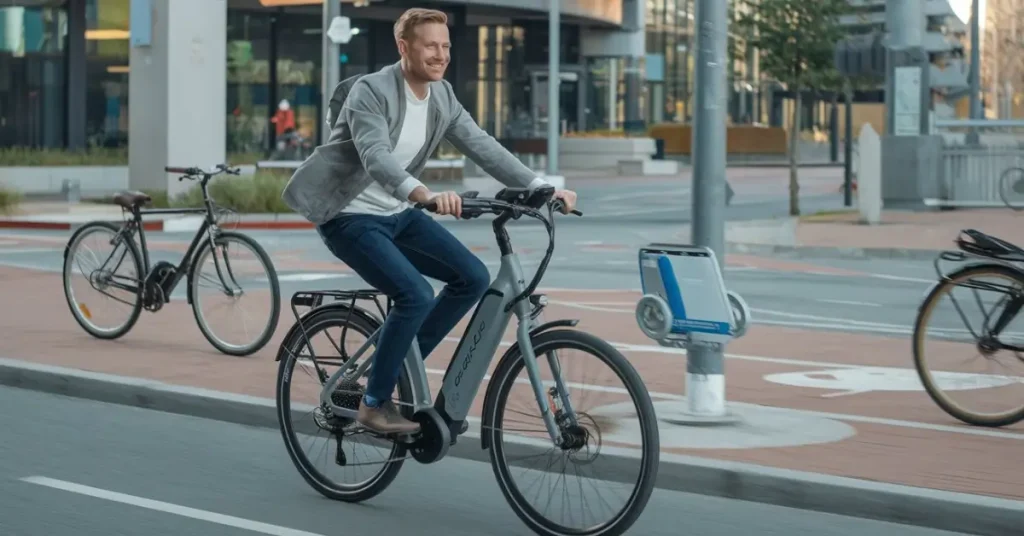
I used to think E-bikes were “deceptive.” Then I rode one. Mind. Blown.
Climbing hills felt effortless, and I could keep up with stronger riders without burning out. Whether you’re commuting, recovering from an injury, or just want an easier ride, an E-bike is a total game-changer.
Why They’re Worth Considering
- Battery-powered motor—makes pedaling easier, especially uphill.
- Great for long commutes—ride farther without exhaustion.
- Multiple styles available—commuter, road, mountain, and hybrid versions exist.
✅ Best for: Commuting, reducing effort, tackling hills with ease.
💡 Example bikes: Rad Power Bikes, Trek Allant+, Specialized Turbo Vado.
🚀 Quick takeaway: If you want to ride more, sweat less, and go farther, an E-bike is a solid investment.
Final Thoughts: Which Bike is Right for You?
There’s no perfect bike—only the one that fits your needs. Here’s a quick cheat sheet:
- For city commuting? Get a commuter bike or E-bike.
- For speed and distance? A road bike is best.
- For off-road thrills? Choose a mountain bike.
- For versatility? A hybrid bike is a great all-rounder.
- For adventure riding? Gravel or touring bikes are ideal.
- For extra power? An E-bike makes life easier.
So, which one feels right for you? 🚴♂️ Let’s talk about how to choose your perfect bike next!
Buying a Bike? Here’s What You Really Need to Know
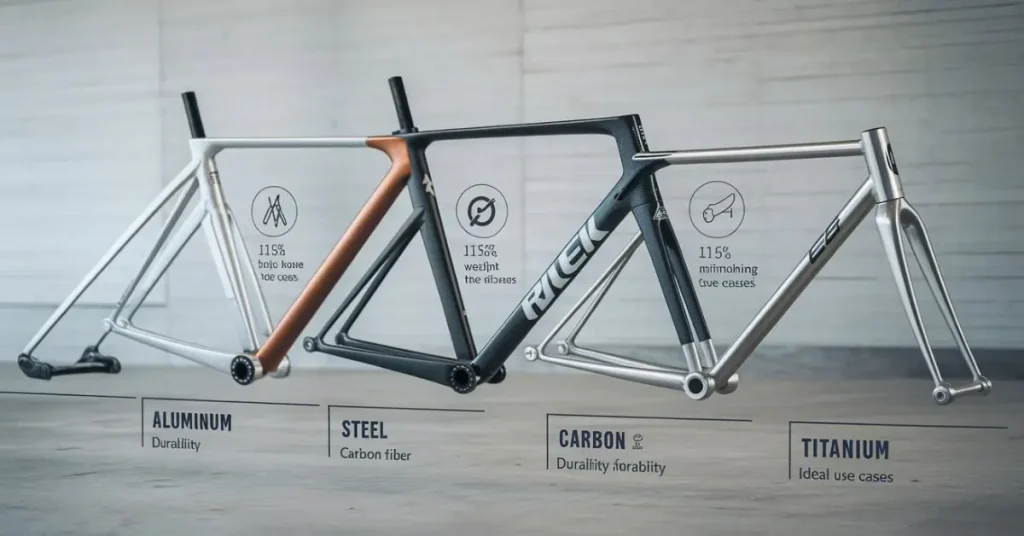
Buying a bike isn’t just about picking the flashiest one or the one with the most gears (trust me, I’ve made that mistake). It’s about finding the right ride—something that feels like an extension of you. If you don’t get it right, you’ll either end up with a bike that collects dust or, worse, one that leaves you sore and frustrated.
So, let’s break it down the right way—no jargon, no fluff, just real advice.
Budget: How Much Should You Actually Spend?
Bikes come in all price ranges, from budget-friendly to “Wait, this costs more than my first car?” Before you spend a dime, ask yourself: What’s my goal?
- $300–$800 (Budget Bikes) → Perfect for beginners, casual riders, and short commutes. These bikes get the job done but are usually heavier with basic parts.
- $800–$2,000 (Mid-Range Bikes) → A sweet spot for commuters, fitness junkies, and weekend warriors. Lighter, smoother, and more durable.
- $2,000+ (High-End Bikes) → If you’re into racing, serious long-distance rides, or just want the Ferrari of bikes, this is where you go all in. Think carbon fiber frames, precision gearing, and buttery-smooth rides.
🚀 Quick takeaway: If you’re just cruising around the neighborhood, don’t overthink it—go budget. But if you’re serious about riding, investing in quality pays off.
Frame Material: What’s the Best Choice?
Think of the frame as the skeleton of your bike—it affects weight, speed, and how it feels on the road.
✔ Aluminum → Lightweight, strong, and budget-friendly. Great for everyday riders.
✔ Steel → Durable, smooth, and absorbs road bumps. Awesome for long-distance touring.
✔ Carbon Fiber → Light as a feather, stiff, and smooth. If speed and performance matter, this is it.
✔ Titanium → A mix of strength and lightness. Shockingly expensive, but if you want a bike to last a lifetime, this is the one.
🚀 Quick takeaway: Aluminum is the best all-rounder, carbon fiber is for serious performance, and steel is the ride-or-die for comfort.
Bike Fit & Comfort: Why Size Really Matters
I once rode a bike that was too big for me. Big mistake. My knees hurt, my back ached, and I felt like I was wrestling the bike rather than riding it. Learn from my pain—get the right fit!
✔ Frame Size → Check brand-specific size charts (they’re all different). Better yet, test ride before buying.
✔ Saddle Comfort → Wide and cushioned = comfort. Narrow and firm = performance. Pick what works for your butt.
✔ Handlebars → Upright bars for relaxed rides, drop bars for speed, and flat bars for a good balance.
🚀 Quick takeaway: A well-fitted bike makes all the difference. If your bike shop doesn’t help with fit, find a new shop.
Gears & Brakes: Do You Really Need 30 Speeds?
Not every bike needs a million gears. Sometimes, simpler is better.
✔ Single-Speed Bikes → Low-maintenance, easy to ride, perfect for flat cities.
✔ Multi-Gear Bikes (7–30 speeds) → Essential if you’re tackling hills or long distances. More gears = more flexibility.
🚲 Brakes Matter Too!
✔ Rim Brakes → Cheap, easy to maintain, but meh in the rain.
✔ Disc Brakes → Stronger stopping power, great for wet weather and off-roading.
🚀 Quick takeaway: If you’re riding casually, keep it simple. But if you’re tackling hills or different terrains, gears and disc brakes are your best friends.
Maintenance & Durability: How Much Effort Do You Want to Put In?
Bikes, like relationships, need some TLC. But some are higher maintenance than others.
✔ Low-Maintenance Bikes → Single-speed, belt-drive, and hybrid bikes. Easy to care for.
✔ Higher-Maintenance Bikes → Road bikes, mountain bikes, and e-bikes need regular tuning.
Pro Tip: Ride often? Invest in solid tires and a good chain lube. Your future self will thank you.
🚀 Quick takeaway: If you hate maintenance, go simple. If you love tinkering, a high-performance bike might be your thing.
Storage & Security: Because Bike Theft Is Real
Ever had your bike stolen? It’s soul-crushing. Protect your ride!
- U-Locks → Stronger than cable locks. Hard to cut.
- Folding Locks → Compact and tough. Good for city riders.
- GPS Trackers → High-tech backup in case the worst happens.
🚀 Quick takeaway: A good lock is cheaper than replacing a stolen bike. Don’t skimp!
Final Thoughts: Your Perfect Bike is Waiting
Now that you know what to look for, you’re so much closer to finding the one.
- Stick to a budget that fits your needs.
- Choose the right frame for your ride style.
- Make sure your bike actually fits you.
- Pick the right gears and brakes for your terrain.
- Consider maintenance and security to keep your bike in top shape.
Still unsure? Test ride! You’ll know when you find the right bike. 🚴♂️
Next up—let’s talk about the best bikes for different types of riders!
Best Bikes for Different Use Cases
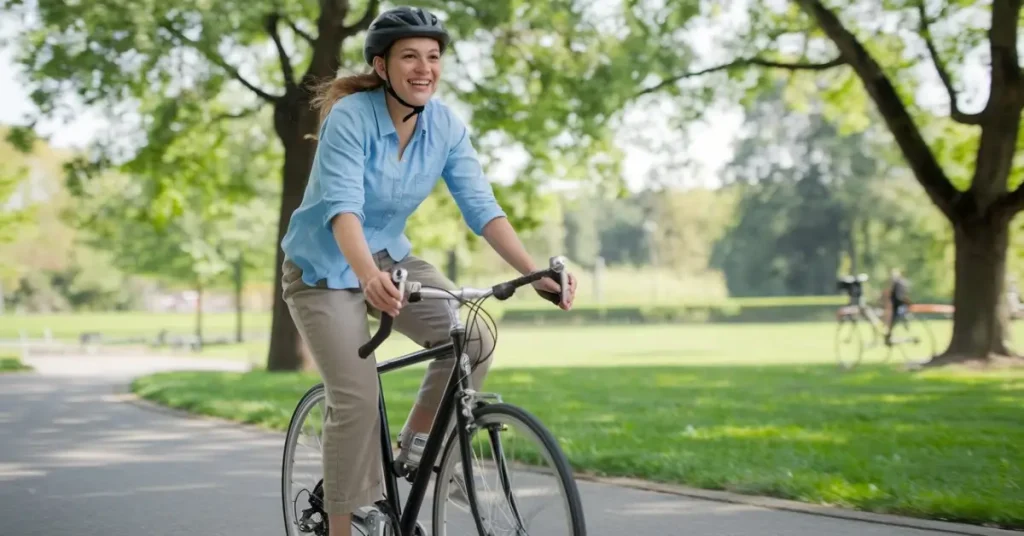
Picking the right bike is kind of like dating. You don’t just go for the flashiest one—you find the one that fits your lifestyle, makes you happy, and doesn’t leave you feeling sore (literally). Whether you’re a newbie, a city commuter, or someone who dreams of riding off into the mountains, I’ve got you covered. Let’s break it down and help you find your perfect match.
Best Bike for Beginners – Simple, Low-Maintenance, Comfortable
If you’re new to cycling, trust me—you don’t need a fancy, high-performance machine that costs as much as a used car. What you do need is something comfortable, easy to ride, and stress-free.
- Hybrid Bikes – The “Swiss Army knife” of bikes. Works well on roads and light trails.
- Cruiser Bikes – Chill, upright position, and comfy. Perfect for relaxed rides.
- Single-Speed Bikes – No gears to worry about. Just hop on and pedal.
👉 Best choice for beginners? A hybrid bike is the safest bet. It’s versatile, comfortable, and gives you the freedom to explore without feeling overwhelmed.
🚀 Quick takeaway: Get a simple, comfy bike that makes you love riding. You can always upgrade once you catch the cycling bug!
Best Bike for Casual Riding – Hybrid or Cruiser Bike
Want to ride just for fun? Maybe cruise around the neighborhood, hit some park trails, or enjoy a slow ride by the beach? You need a bike that’s all about comfort and easy riding.
- Hybrid Bikes – Smooth, stable, and lets you ride wherever.
- Cruiser Bikes – Stylish, relaxed, and perfect for slow, scenic rides.
- Comfort Bikes – Extra padding, suspension, and a super smooth feel.
👉 Best choice for casual rides? A cruiser bike if comfort is king, or a hybrid bike if you want something a little more versatile.
🚀 Quick takeaway: If you’re all about chill rides, go for a cruiser or hybrid bike. No stress, just fun!
Best Bike for Commuting – Folding Bike, City Bike, or E-Bike
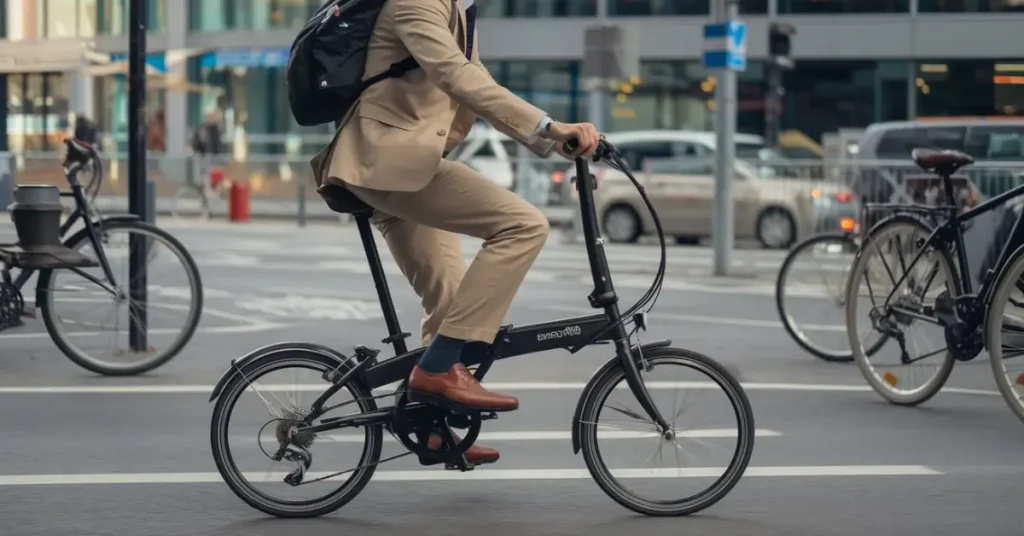
Riding to work or school? A good commuter bike should be efficient, practical, and reliable—because nobody wants to show up late, sweaty, or exhausted.
- Folding Bikes – Easy to store, great for trains, buses, or small apartments.
- City/Commuter Bikes – Sturdy, upright seating, built-in racks for your stuff.
- Electric Bikes (E-Bikes) – Gives you an extra boost for long commutes or hilly areas.
👉 Best choice for commuting? If you need to carry your bike, get a folding bike. If your commute is long, an E-bike will be your best friend.
🚀 Quick takeaway: For daily commuting, go practical. A folding bike for tight spaces or an E-bike for effortless rides.
Best Bike for Budget Buyers – Affordable but Reliable
Not all budget bikes are great. Some are solid deals, others are just wobbly, heavy nightmares waiting to happen. The trick? Find quality within your budget.
- Entry-Level Hybrid Bikes – Affordable, durable, and easy to maintain.
- Used Bikes from Reputable Brands – A well-maintained used bike beats a bad new one.
- Big-Brand Budget Models – Trek, Specialized, and Giant have solid entry-level options.
👉 Best budget option? A used hybrid bike or an entry-level commuter bike. Avoid big-box store bikes—they’re cheap for a reason (bad components, heavy frames, and expensive repairs down the road).
🚀 Quick takeaway: Don’t chase the cheapest price, chase the best value. A good used bike is often better than a bad new one.
Best Bike for Adventure Seekers – Gravel, Touring, or Mountain Bike
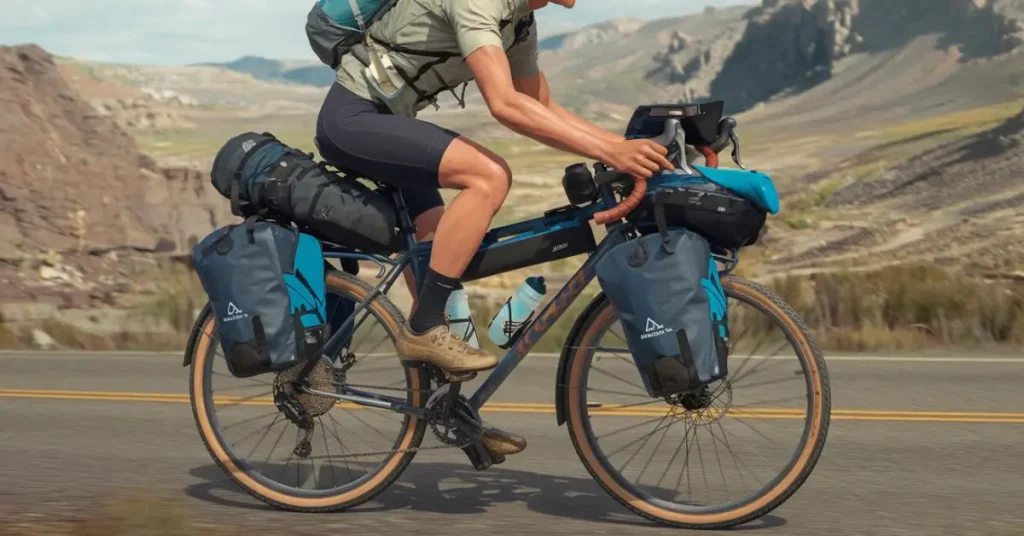
If your idea of fun includes gravel roads, rugged trails, or multi-day bikepacking trips, you need a bike that can handle the wild.
- Gravel Bikes – Fast, tough, and perfect for mixed terrain (dirt, gravel, pavement).
- Touring Bikes – Sturdy with racks for long-haul travel.
- Mountain Bikes – Built for rough trails, rocks, and serious adventure.
👉 Best adventure bike? A gravel bike if you want versatility, a touring bike for long-distance travel, and a mountain bike for tackling extreme trails.
🚀 Quick takeaway: Love off-road adventures? Gravel bikes for versatility, touring bikes for long rides, and mountain bikes for hardcore trails.
Final Thoughts: What’s the Right Bike for You?
The best bike isn’t the most expensive one—it’s the one that fits your life. Here’s your quick cheat sheet:
- New rider? Get a hybrid or cruiser bike for comfort.
- Casual rider? Stick with a hybrid or comfort bike.
- Daily commuter? Go for a folding bike, city bike, or E-bike.
- On a budget? Look for entry-level hybrid bikes or used name-brand bikes.
- Adventure junkie? Grab a gravel, touring, or mountain bike.
At the end of the day, the best bike is the one that makes you excited to ride. 🚴♂️ Now, which one feels right for you? Let’s get rolling!
Common Mistakes to Avoid When Buying a Bike
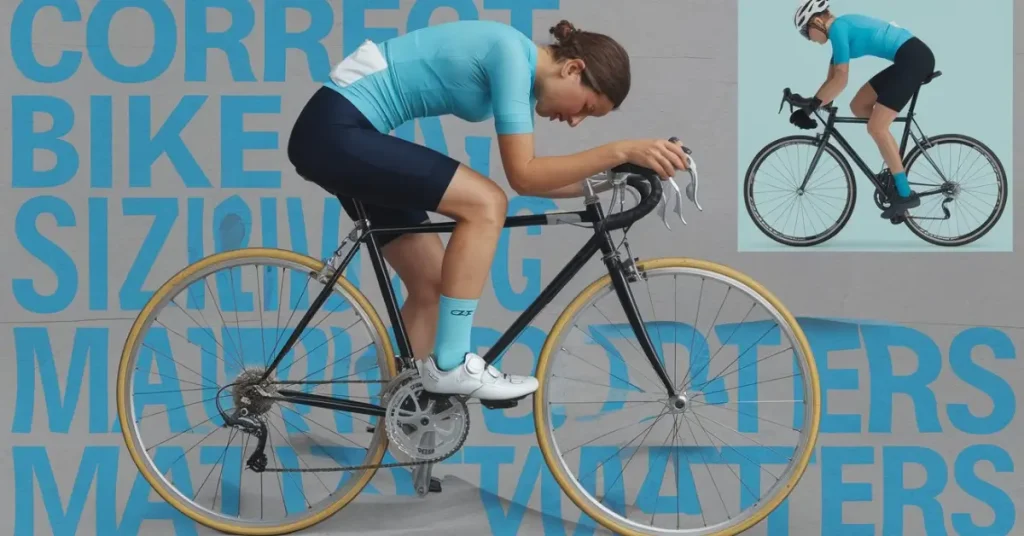
Buying a bike is exciting, but making the wrong choice? That can turn your two-wheeled dream into a frustrating experience. Trust me—I’ve made my fair share of mistakes. So before you hand over your hard-earned cash, here’s what NOT to do.
❌ Choosing the Wrong Size 🚲
Imagine buying a pair of shoes that are two sizes too big. You wouldn’t do it, right? Well, picking the wrong bike size is just as bad. Too big, and you’ll struggle to control it. Too small, and your knees will scream in protest.
👉 Quick Fix: Always check the brand’s size chart—bike sizes aren’t universal. Even better? Test ride before you buy! Your feet should touch the ground slightly when seated, and your legs should have a slight bend at full pedal extension.
I once bought a bike online, thinking, “Eh, medium should be fine.” Spoiler: It wasn’t. Every ride felt awkward, my back ached, and I dreaded hopping on. A properly sized bicycle makes ALL the difference.
❌ Buying a Bike Without Considering the Terrain 🏞️
Not all bikes are built for the same roads. A sleek road bike on a rocky trail? Disaster. A heavy mountain bike for city commuting? Overkill.
👉 Quick Fix: Match your bike to where you’ll ride the most. Stick to road bikes for smooth streets, mountain bikes for trails, hybrids for mixed terrain, and gravel bikes for adventure rides.
A friend once bought a mountain bike for city commuting. A few weeks later, he was exhausted from pushing that tank of a bike uphill every day. He swapped it for a hybrid and never looked back.
❌ Overspending on Features You Don’t Need 💸
Do you really need 30 gears if you’re just riding around the park? Probably not. A high-end carbon frame? Only if you’re racing.
👉 Quick Fix: Stick to what you actually need. Commuters need reliability, casual riders need comfort, and performance cyclists need speed. Fancy features sound cool, but they’re useless if they don’t fit your riding style.
I once splurged on a high-performance road bike, convinced I’d become the next Tour de France contender. Reality check? I barely used half the gears, and the aggressive riding position wasn’t my vibe. Lesson learned: Buy for function, not hype.
❌ Ignoring Maintenance Costs 🛠️
Bikes aren’t just a one-time purchase. Neglecting maintenance can lead to costly repairs—or worse, a broken bike when you need it most.
👉 Quick Fix: Budget for basic upkeep! A good bike lock, occasional tune-ups, and a solid pump are must-haves. If you want a low-maintenance ride, consider a single-speed bike, belt-drive system, or an internally geared hub.
A buddy of mine bought a fancy road bike but never oiled the chain or checked the tires. A year later? Rust, flats, and a hefty repair bill. Take care of your bicycle, and it’ll take care of you.
Final Thoughts: Ride Smart, Not Sorry
A bike should make your life easier, not harder. Get the right size, match it to your terrain, avoid unnecessary extras, and don’t forget maintenance. Do that, and you’ll have a smooth, fun, and hassle-free ride. 🚲
Still unsure? Drop your questions in the comments—I’ve made enough mistakes for both of us! 😆
FAQs
What is the best bike for beginners?
The best beginner bike is simple, comfortable, and easy to maintain. I always recommend hybrid bikes to new riders because they’re versatile, comfy, and great for casual rides. A hybrid lets you explore city streets, bike paths, and even gentle trails without feeling overwhelmed.
Should I buy a cheap bike or invest in a good one?
I get it—cheap bikes are tempting, but investing a little more in quality pays off big-time. Budget bikes are fine for occasional rides, but mid-range bikes offer better parts, lighter frames, and a smoother ride. If you plan to ride regularly, it’s worth investing in something that will last.
What is the most comfortable bike for city riding?
When comfort is key, go for a commuter, cruiser, or hybrid bike. These bikes have upright seating, padded saddles, and comfy handlebars. My personal favorite is a hybrid—it’s versatile, easy on your back, and perfect for relaxed city cruising.
How do I choose the right bike frame size?
Bike size matters—a lot. Check the brand’s sizing chart (they vary), and if possible, test ride it first. When seated, your feet should lightly touch the ground, and your legs should have a slight bend when fully extended on the pedals. Don’t skip this step; the right fit makes rides way more enjoyable!
What bike is best for both road and off-road riding?
Looking for one bike to do it all? A hybrid or gravel bike is your best bet. Hybrids are versatile enough for city streets and light trails, while gravel bikes handle pavement and rougher terrain like a champ. Either way, you’ll get flexibility without sacrificing comfort or performance.
Conclusion & Final Recommendations
So, What Sort of Bicycle Should I Buy? Well, that depends—on you. The truth is, there’s no one-size-fits-all answer. It’s like picking a pair of shoes. You wouldn’t wear hiking boots to a beach party, right? The right bike makes every ride feel effortless, whether you’re zipping through city streets, conquering rugged trails, or just cruising for fun.
But before you swipe your card on a shiny new ride, let’s break it down.
Quick Recap: Your Ideal Bike in a Nutshell
- Commuting to work? A commuter bike, folding bike, or e-bike keeps things smooth and stress-free.
- Speed demon? If you love long rides and asphalt, a road bike is your best bet.
- Trail junkie? Mountain bikes are built for dirt, rocks, and adventure.
- Want the best of both worlds? A hybrid or gravel bike gives you versatility.
- New to cycling? Keep it simple—a hybrid or cruiser bike is beginner-friendly.
Test Ride Before You Buy—Trust Me on This!
No matter how amazing a bike looks online, nothing beats actually riding it. I learned this the hard way when I bought my first road bike based purely on reviews. It looked sleek, and had all the right specs… and yet, I hated it. The frame felt too stiff, the handlebars were awkward, and within ten minutes, my back was screaming. I ended up swapping it for a more comfortable size. Lesson learned: always test ride before you buy.
When you hop on a bike, pay attention to:
👉 Comfort – Does the seat feel right? Are you reaching too far for the handlebars?
👉 Handling – Is it smooth and stable, or does it feel twitchy?
👉 Fit – If anything feels off, try a different size or style. Your dream ride is out there!
Need More Help? You’ve Got Options!
Picking the right bike can feel overwhelming, but you don’t have to figure it out alone. Here’s where to look for extra guidance:
🔹 Bike Buying Guides – Brands like Trek, Specialized, and Giant have handy size charts and beginner-friendly guides.
🔹 Local Bike Shops – These folks are gold. They’ll help you find the right fit and even let you test ride for free.
🔹 Cycling Communities & Forums – Check out Reddit’s r/bicycling or local Facebook groups. Real riders, real experiences.
💬 Let’s Keep the Conversation Rolling!
Still unsure? Drop your questions in the comments—I’d love to help you find the perfect ride! 🚴♀️ Cycling is all about freedom, fun, and finding what works for you. Let’s get you rolling with confidence!
Read Next…
Best regards,
~Team BikeBicycler
